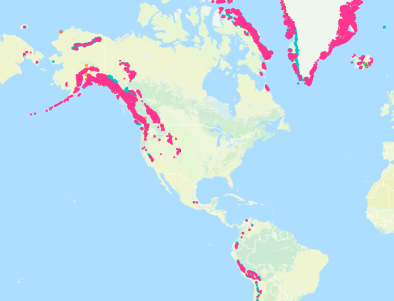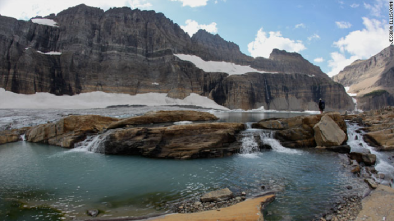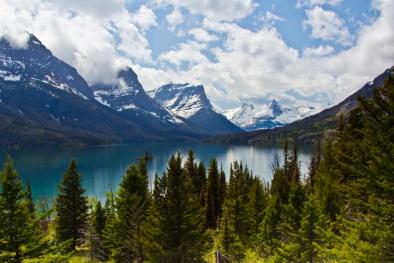Science Source
Modeled Climate-Induced Glacier Change in Glacier National Park, 1850–2100
- States that the glaciers in the Blackfoot–Jackson Glacier Basin of Glacier National Park, Montana, decreased in area from 21.6 square kilometers (km2 ) in 1850 to 7.4 km2 in 1979
- States that over this same period global temperatures increased by 0.45º C (± 0.15º C)
- Analyzes the climatic causes and ecological consequences of glacier retreat by creating spatially explicit models of the creation and ablation of glaciers and of the response of vegetation to climate change
- Determines the melt rate and spatial distribution of glaciers under two possible future climate scenarios, one based on carbon dioxide–induced global warming and the other on a linear temperature extrapolation
- Finds that under the former scenario, all glaciers in the basin will disappear by the year 2030, despite predicted increases in precipitation; under the latter, melting is slower
- Analyzes, using a second model, vegetation responses to variations in soil moisture and increasing temperature in a complex alpine landscape
- Predicts where plant communities are likely to be located as conditions change
Related Content
Real Time Data

Nov 22, 2016 | National Snow and Ice Data Center
Global Land Ice Measurements from Space (GLIMS)
Headline

Nov 22, 2016 | CNN
Montana's melting glaciers: The poster-child for climate change
Headline

Nov 22, 2016 | Mother Jones
7 More National Parks Threatened by Fire
Science Source
| Climatic Change
Changes in snowmelt runoff timing in Western North America under a 'business as usual' climate change scenario
Iris Stewart, Daniel Cayan, and Michael Dettinger


